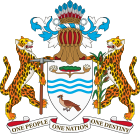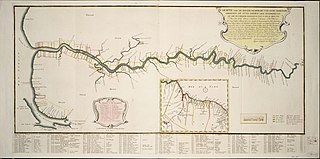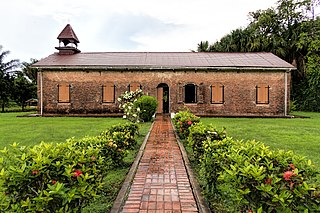 |
|---|
| Constitution |
General elections were held in British Guiana in 1911. [1]
 |
|---|
| Constitution |
General elections were held in British Guiana in 1911. [1]
The elections were held under the 1891 constitution, which provided for a 16-member Court of Policy, half of which was elected. The Court included the Governor, seven government officials (the Attorney General, the Government Secretary, the Immigration Agent General and the Receiver General, together with three other appointees). The eight elected members were elected from seven constituencies; [2] Demerara East, Demerara West, Essequebo North Western, Essequebo South Eastern, Berbice, City of Georgetown (2 members) and New Amsterdam. [3]
In addition, six "Financial Representatives" were also elected in six single member constituencies; Demerara, Essequebo North Western, Essequebo South Eastern, Berbice, Georgetown and New Amsterdam. [3] Together with the Court of Policy, the two groups formed the Combined Court. [2]
The franchise was restricted on the basis of a minimum income level, and women could not vote; [2] as a result, only 1.37% of the population were entitled to vote. [4] Although the minimum monthly income level had been reduced from £40 to £25 since the 1906 elections, only 251 of the 126,517 Indo-Guyanese population was on the voter roll, largely due to a lack of command of English. [1]
The history of Guyana begins about 35,000 years ago with the arrival of humans coming from Eurasia. These migrants became the Carib and Arawak tribes, who met Alonso de Ojeda's first expedition from Spain in 1499 at the Essequibo River. In the ensuing colonial era, Guyana's government was defined by the successive policies of Spanish, French, Dutch, and British settlers. During the colonial period, Guyana's economy was focused on plantation agriculture, which initially depended on slave labor. Guyana saw major slave rebellions in 1763 and 1823. Following the Slavery Abolition Act of 1833, 800,000 enslaved Africans in the Caribbean and South Africa were freed, resulting in plantations contracting indentured workers, mainly from India. Eventually, these Indians joined forces with Afro-Guyanese descendants of slaves to demand equal rights in government and society. After the Second World War, the British Empire pursued policy decolonization of its overseas territories, with independence granted to British Guiana on May 26, 1966. Following independence, Forbes Burnham of the rose to power, quickly becoming an authoritarian leader, pledging to bring socialism to Guyana. His power began to weaken following international attention brought to Guyana in wake of the Jonestown mass murder suicide in 1978.

British Guiana was a British colony, part of the mainland British West Indies, which resides on the northern coast of South America. Since 1966 it has been known as the independent nation of Guyana.

Demerara is a historical region in the Guianas, on the north coast of South America, now part of the country of Guyana. It was a colony of the Dutch West India Company between 1745 and 1792 and a colony of the Dutch state from 1792 until 1815. It was merged with Essequibo in 1812 by the British who took control. It formally became a British colony in 1815 until Demerara-Essequibo was merged with Berbice to form the colony of British Guiana in 1831. In 1838, it became a county of British Guiana until 1958. In 1966, British Guiana gained independence as Guyana and in 1970 it became a republic as the Co-operative Republic of Guyana. It was located around the lower course of the Demerara River, and its main settlement was Georgetown.

New Amsterdam is the regional capital of East Berbice-Corentyne, Guyana and one of the country's largest towns. It is 100 kilometres (62 mi) from the capital, Georgetown and located on the eastern bank of the Berbice River, 6 km (4 mi) upriver from its mouth at the Atlantic Ocean, and immediately south of the Canje River. New Amsterdam's population is 17,329 inhabitants as of 2012.

Elections in Guyana take place within the framework of a multi-party representative democracy and a presidential system. The National Assembly is directly elected, with the nominee of the party or alliance that receives the most votes becoming President.

Berbice is a region along the Berbice River in Guyana, which was between 1627 and 1792 a colony of the Dutch West India Company and between 1792 and 1815 a colony of the Dutch state. After having been ceded to the United Kingdom of Great Britain and Ireland in the latter year, it was merged with Demerara-Essequibo to form the colony of British Guiana in 1831. It became a county of British Guiana in 1838 till 1958. In 1966, British Guiana gained independence as Guyana and in 1970 it became a republic as the Co-operative Republic of Guyana.
Stabroek was the old name of Georgetown, Guyana, between 1784 and 1812, and was the capital of Demerara. Stabroek is currently a ward in the centre of Georgetown.
The Railways of Guyana comprised two public railways, the Demerara-Berbice Railway and the Demerara-Essequibo Railway. There are also several industrial railways mainly for the bauxite industry. The Demerara-Berbice Railway is the oldest in South America. None of the railways are in operation in the 21st century.

The Colony of Demerara-Essequibo was created on 28 April 1812, when the British combined the colonies of Demerara and Essequibo into the colony of Demerara-Essequibo. They were officially ceded to Britain on 13 August 1814. On 20 November 1815 the agreement was ratified by the Netherlands. On 21 July 1831 Demerara-Esequibo united with Berbice as British Guiana.

General elections were held in British Guiana on 15 October 1926.

General elections were held in British Guiana on 19 October 1921.

General elections were held in British Guiana in 1916.

General elections were held in British Guiana in 1906.

General elections were held in British Guiana in 1901.

General elections were held in British Guiana in 1897.

General elections were held in British Guiana in 1892.

The Combined Court was the legislature of British Guiana until 1928. In its final form, it consisted of a sitting of the Court of Policy together with the elected Financial Representatives.

The Court of Policy was a legislative body in Dutch and British Guiana until 1928. For most of its existence it formed the Combined Court together with the six Financial Representatives.

The College of Kiezers was an electoral college in the Dutch colonies of Essequibo and Demerara and their successor, British Guiana.